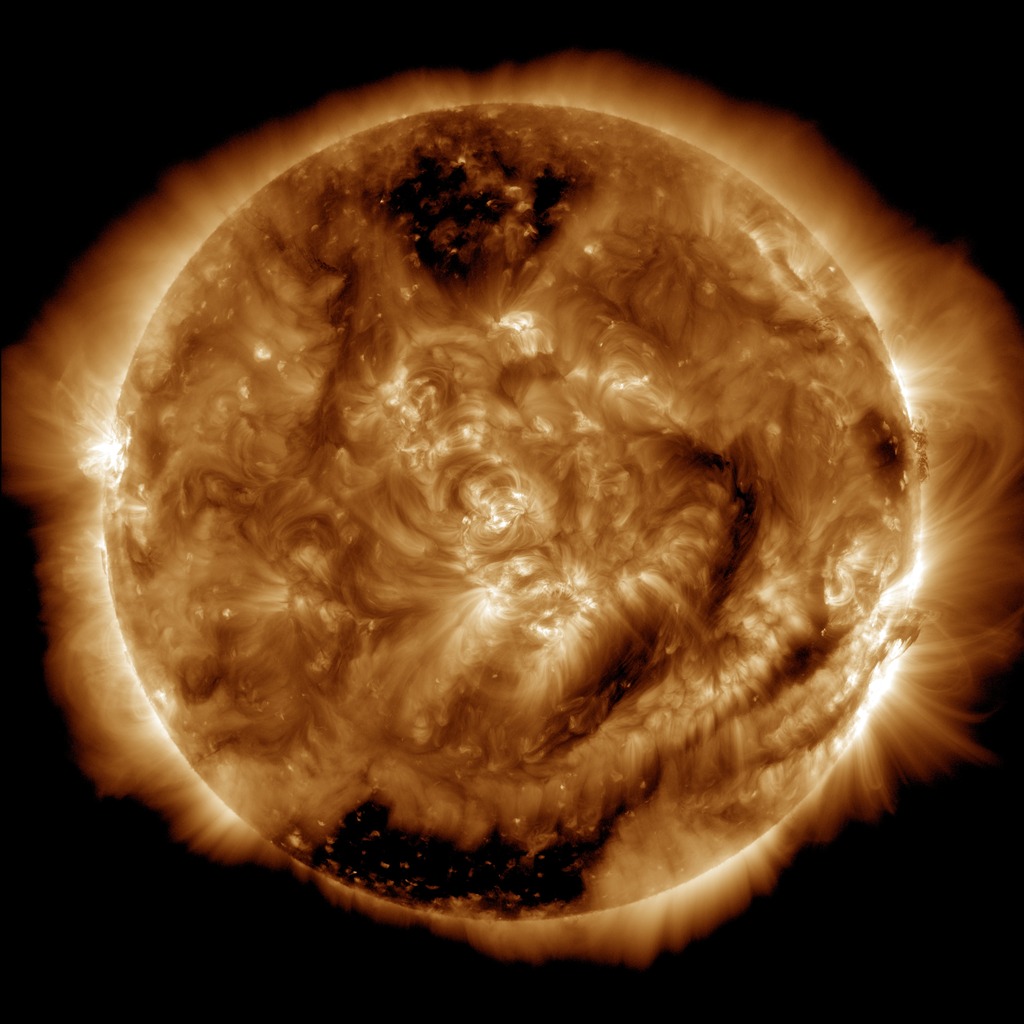Swift Millionth Image Mosaic

This mosaic of the Neil Gehrels Swift Observatory is created from images of astronomical objects captured by the satellite’s Ultraviolet/Optical Telescope which recently captured its millionth image. Each tile is 52 x 39 pixels, and at maximum resolution, the entire mosaic is 5,252 x 3,744 pixels. Zoom in to see each tile more clearly.
Credit: NASA/Swift and AndreaMosaic
The Ultraviolet/Optical Telescope (UVOT) aboard the Neil Gehrels Swift Observatory captured its millionth image on May 13, 2018. It took an image of an active galaxy called 2MASX J16110570+0234002, which scientists think exhibited some unusual behavior. A mosaic, created using images UVOT has taken since Swift launched in 2004, celebrates this major milestone for the mission.
UVOT monitors the optical and ultraviolet afterglow of gamma-ray bursts, the most powerful explosions in the universe. Swift’s two other instruments observe these bursts in X-rays and gamma rays. The explosions only last for a few seconds, but Swift can autonomously respond to a burst detection within two minutes and bring the event into view for follow-up observations.
Swift was renamed in January 2018 to honor the late Neil Gehrels, who served as the mission’s principle investigator.
Imagery for this mosaic came from here and here.

This colorized image is the millionth captured by the Neil Gehrels Swift Observatory’s Ultraviolet/Optical Telescope. The bright dot at the center of the frame is the active galaxy 2MASX J16110570+0234002 located in the direction of the constellation Serpens Caput. Scientists think the galaxy’s behavior is unusual and are working to understand what might be the cause.
Credit: NASA/Swift/B. Cenko and I. Arcavi, Los Cumbres Observatory

This colorized image is the millionth captured by the Neil Gehrels Swift Observatory’s Ultraviolet/Optical Telescope. The bright dot in the circle is the active galaxy 2MASX J16110570+0234002. The image is centered in the constellation Serpens and is 9.6 arcminutes across. Scientists think the galaxy’s behavior is unusual and are working to understand what might be the cause.
Credit: NASA/Swift/B. Cenko and I. Arcavi, Los Cumbres Observatory
Credits
Please give credit for this item to:
NASA's Goddard Space Flight Center. However, individual items should be credited as indicated above.
-
Producer
- Scott Wiessinger (USRA)
-
Writer
- Sara Mitchell (University of Maryland College Park)
-
Science writer
- Jeanette Kazmierczak (University of Maryland College Park)
-
Scientist
- Brad Cenko (NASA/GSFC)
-
Graphics
- Francis Reddy (University of Maryland College Park)
Release date
This page was originally published on Tuesday, August 21, 2018.
This page was last updated on Wednesday, May 3, 2023 at 1:46 PM EDT.
